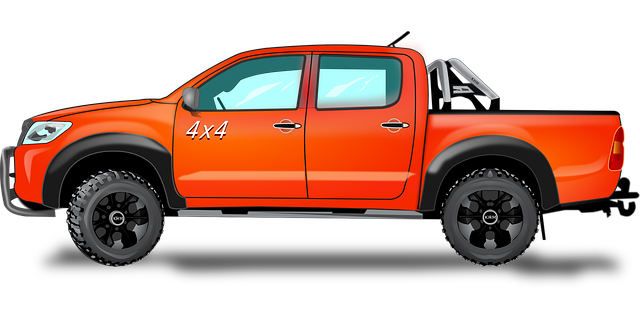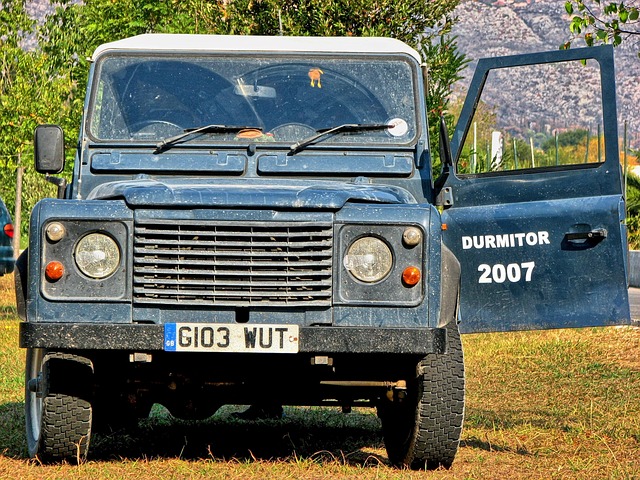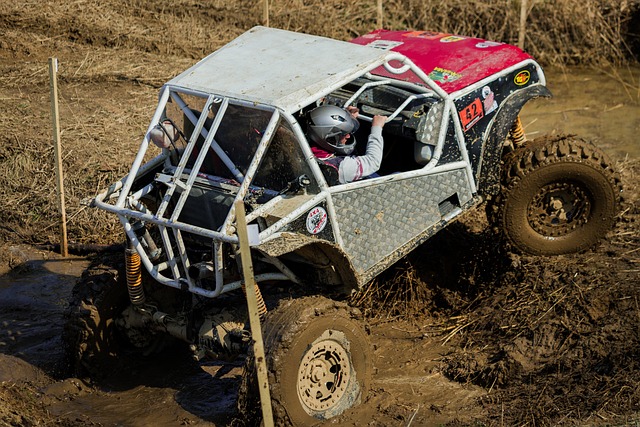Bumper guards are essential for 4x4s and off-road vehicles, protecting against front and rear impacts. Customizable options like steel and plastic guard types cater to different driving needs and terrains. Regular maintenance, including inspections and repairs, prevents damage from harsh conditions. Choosing the right bumper guard during rgv-4×4-repair enhances off-road capabilities, with installation involving proper alignment and tool use. Meticulous upkeep, including corrosion resistance and visual checks, ensures optimal vehicle protection.
Bumper guards, also known as bumper bars or protection barriers, are essential components of off-road vehicles, offering vital vehicle protection during rugged terrain and everyday driving. This comprehensive guide explores the multifaceted world of bumper guards, from understanding their role in safeguarding your car to navigating the various types suitable for diverse needs. We delve into common issues faced with rgv-4×4-repair, maintenance tips, and a step-by-step installation process for DIY enthusiasts.
- Understanding Bumper Guards: Their Role in Vehicle Protection
- The Different Types of Bumper Guards and Their Applications
- rgv-4×4-repair: Common Issues and Maintenance Tips
- How to Choose the Right Bumper Guard for Your Vehicle
- Installation Process: A Step-by-Step Guide for DIYers
- Best Practices for Maintaining and Replacing Bumper Guards
Understanding Bumper Guards: Their Role in Vehicle Protection

Bumper guards, also known as bumper bars or impact bumpers, are essential components in vehicle protection, especially for 4x4s and off-road vehicles. These robust barriers are designed to absorb and distribute the force of impacts, safeguarding the front and rear ends of a vehicle from damage during collisions or rough terrain encounters. In the case of an accident, bumper guards play a critical role in preventing significant frontal or rear-end damage, thereby reducing the risk of injury to occupants and containing repairs to essential parts like the chassis and suspension.
For those engaged in rgv-4×4-repair, understanding the function and importance of bumper guards is paramount. They are often customizable, allowing owners to enhance their vehicle’s off-road capabilities by adjusting the height and angle for optimal impact resistance. This flexibility ensures that each vehicle is tailored to its owner’s specific needs, be it navigating challenging trails or simply providing added security on daily commutes.
The Different Types of Bumper Guards and Their Applications

Bumper guards come in various types, each designed for specific applications and vehicle needs. One common category is the steel bumper guard, known for its durability and protection against minor collisions and obstacles. These are popular among off-road enthusiasts and those who drive in rugged terrains, as they can withstand intense impacts without compromising structural integrity.
Another type is the plastic bumper guard, often lighter and more affordable alternatives. They offer a good balance between protection and weight savings, making them suitable for everyday driving conditions. For vehicles undergoing rgv-4×4-repair or modifications, these guards can be easily installed or replaced, ensuring continued protection without compromising aesthetics.
rgv-4×4-repair: Common Issues and Maintenance Tips

Bumper guards, also known as RGV-4×4 repairs, are a crucial component in maintaining the integrity and safety of your off-road vehicle. Common issues often arise due to the harsh conditions these vehicles face, such as potholes, rough terrain, and road debris. One frequent problem is damage to the bumper’s mountings, which can be caused by impacts or misalignments. Over time, these parts may weaken, leading to excessive play and potential failure during driving.
Regular maintenance is key to preventing such issues. Inspecting your bumper guards frequently for any signs of wear, cracks, or loose connections is essential. Addressing these problems early through RGV-4×4 repairs can save you from more significant damage down the line. Keep an eye on bolts and brackets as well; tightening or replacing them as needed will ensure the bumper remains securely in place, providing optimal protection for your vehicle during off-road adventures.
How to Choose the Right Bumper Guard for Your Vehicle

Selecting the ideal bumper guard for your vehicle depends on several factors, especially if you’re considering RGV-4×4 repairs. The first step is to evaluate the purpose and conditions in which your vehicle will be used. Off-road adventures demand robust guards capable of withstanding rough terrain, while daily commuters may require lighter, more aesthetic options.
Next, consider the compatibility of the bumper guard with your vehicle’s make and model. Ensure it fits seamlessly, aligning with your car’s design and providing adequate protection without compromising the overall aesthetics. Additionally, check for features like corrosion resistance, especially if you live in regions with high moisture levels, ensuring longevity and maintaining the value of your vehicle during RGV-4×4 repairs or any other customization process.
Installation Process: A Step-by-Step Guide for DIYers

Installing bumper guards, also known as bump stops, is a straightforward process that can significantly enhance your vehicle’s off-road capabilities. Here’s a step-by-step guide tailored for DIY enthusiasts who want to incorporate RGV-4×4-repair techniques into their project.
Begin by ensuring your vehicle is parked on a level surface and engage the parking brake. Next, locate the bumper guards, which typically screw or clip into place. Start by attaching one guard at a time, beginning at the front of the vehicle. Use a socket wrench or screwdriver to fasten the guard securely to the chassis or existing suspension components. Work your way along each side, ensuring proper alignment and even spacing between guards. Double-check that all bolts are tightly fastened for optimal performance during rugged terrain adventures.
Best Practices for Maintaining and Replacing Bumper Guards

To ensure optimal performance and protection, regular maintenance is key for bumper guards, especially on rugged vehicles like RGVs. Start by inspecting them for any signs of damage or wear, such as cracks, dents, or peeling paint. Addressing these issues promptly prevents further deterioration. Cleaning with mild soap and water removes dirt and grime, preserving the guard’s integrity. For more severe cases, consider professional repairs or replacement parts specifically designed for RGV-4×4-repair.
When replacing bumper guards, opt for high-quality materials that match the vehicle’s original specifications. Ensure proper fitment to maintain the vehicle’s ground clearance and off-road capabilities. Regularly check for loose connections and reapply sealants to prevent corrosion, especially in challenging environments. This meticulous approach to maintenance and replacement guarantees your RGV remains protected during intense 4×4 repairs.
Bumper guards, or bumpsers as they’re often called, are an essential component of vehicle protection. They serve as a first line of defense against potential damage, offering both aesthetic and structural benefits. Whether you’re facing common issues with your RGV-4×4-repair or simply looking to maintain and replace bumper guards, understanding their types, applications, and best practices is crucial. By following the step-by-step installation guide and adopting proper maintenance routines, you can ensure your vehicle’s front end remains robust and protected.



